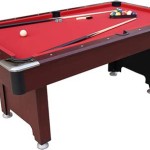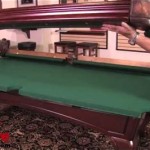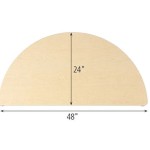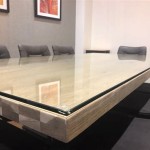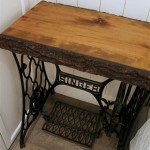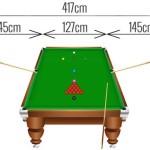How to Edge a Round Mosaic Table
Edging a round mosaic table involves finishing the exposed edge with a material that protects the mosaic, provides a comfortable surface, and contributes to the overall aesthetic appeal of the piece. This process requires careful planning, selection of appropriate materials, and precise application to ensure a durable and visually pleasing result. Several methods can be employed, each offering varying degrees of complexity, cost, and visual impact. This article will outline the essential steps involved in effectively edging a round mosaic table, emphasizing best practices for achieving a professional finish.
Before commencing the edging process, it is crucial to thoroughly evaluate the existing mosaic surface. This assessment should include checking for any loose tiles, uneven surfaces, or gaps in the grout. Addressing these issues before edging will prevent future problems and ensure that the edging material adheres properly and provides a stable, long-lasting finish. Clean the mosaic surface meticulously, removing any dust, debris, or grout residue. A clean surface promotes optimal adhesion of the edging material.
Selecting the Appropriate Edging Material
The choice of edging material significantly impacts the final look and durability of the mosaic table. Common options include wood, metal, tile, and resin. Each material possesses unique characteristics that make it suitable for different applications and aesthetic preferences.
Wood edging offers a warm, natural aesthetic and can be easily customized with paint, stain, or varnish. It is relatively easy to work with using standard woodworking tools. However, wood is susceptible to moisture damage and requires regular maintenance to prevent rotting, warping, or cracking, especially if the table will be exposed to the elements. Hardwoods like oak, maple, or teak are generally preferred for their durability and resistance to wear and tear.
Metal edging, such as aluminum, steel, or brass, provides a sleek, modern look and exceptional durability. Metal is resistant to moisture, heat, and impact, making it a suitable choice for high-traffic areas or outdoor use. However, metal edging can be more challenging to install, requiring specialized tools and techniques for cutting and shaping. Welding or soldering may be necessary to create seamless joints. Aluminum is a popular choice due to its lightweight nature and corrosion resistance.
Tile edging involves using smaller tiles to create a border around the mosaic table. This option offers a cohesive and visually appealing finish, seamlessly integrating the edging with the existing mosaic design. Tile edging requires careful planning and precise cutting to ensure a smooth, uniform surface. It is essential to select tiles that complement the existing mosaic in terms of color, size, and texture. Proper grout application is crucial for sealing the joints and preventing water damage.
Resin edging involves pouring a liquid resin around the perimeter of the mosaic table, creating a smooth, seamless, and durable finish. Resin is available in a variety of colors and finishes, allowing for customization to match the mosaic design. It is important to choose a high-quality resin that is resistant to UV damage and yellowing. Proper mixing and pouring techniques are essential to prevent bubbles and ensure a uniform thickness. Resin edging provides a waterproof and low-maintenance solution.
Preparing the Table for Edging
Before applying the edging material, it is essential to prepare the table surface adequately. This preparation ensures proper adhesion and a professional-looking finish. The specific steps involved will vary depending on the chosen edging material but generally include cleaning, sanding, and applying an appropriate primer or adhesive.
For wood edging, sand the edges of the table to create a smooth, even surface. Apply a wood primer to seal the wood and promote adhesion of the adhesive. Measure and cut the wood edging to the desired length, ensuring a precise fit around the perimeter of the table. Miter the corners to create clean, seamless joints. Use wood glue and clamps to secure the edging to the table, allowing the glue to dry completely before proceeding.
For metal edging, clean the metal thoroughly to remove any grease or dirt. If necessary, grind or file the edges to create a smooth surface. Use a metal adhesive or epoxy to bond the metal edging to the table. Clamps may be required to hold the edging in place while the adhesive cures. Ensure that the metal edging is properly aligned and flush with the mosaic surface.
For tile edging, apply a thin-set mortar to the edges of the table. Carefully position the tiles around the perimeter, ensuring proper spacing between each tile. Use tile spacers to maintain consistent grout lines. Allow the mortar to dry completely before grouting the joints. Apply grout using a grout float, working it into the joints and removing any excess. Wipe the tiles clean with a damp sponge.
For resin edging, create a dam or mold around the perimeter of the table to contain the liquid resin. This can be done using tape, cardboard, or other flexible materials. Ensure that the dam is watertight to prevent resin leakage. Mix the resin according to the manufacturer's instructions, paying close attention to the mixing ratio and pot life. Pour the resin slowly and evenly around the perimeter of the table, ensuring that it fills the entire area. Use a heat gun or torch to remove any bubbles from the resin. Allow the resin to cure completely before removing the dam.
Applying and Finishing the Edge
The final step involves applying the chosen edging material and finishing it to achieve the desired look and feel. This may include sanding, painting, staining, varnishing, or applying a sealant. The specific techniques will vary depending on the material used and the desired aesthetic.
For wood edging, sand the edges of the wood to create a smooth, even surface. Fill any gaps or imperfections with wood filler. Apply a primer, followed by paint, stain, or varnish. Allow each coat to dry completely before applying the next. Apply a sealant to protect the wood from moisture and UV damage.
For metal edging, polish the metal to remove any scratches or imperfections. Apply a metal sealant to protect the metal from corrosion. If desired, paint the metal with a metal-specific paint. Ensure that the paint is compatible with the type of metal used.
For tile edging, apply a grout sealant to protect the grout from staining and water damage. Clean the tiles thoroughly to remove any grout residue. Polish the tiles to enhance their shine and luster.
For resin edging, sand the resin to remove any imperfections or sharp edges. Polish the resin to create a smooth, glossy finish. Apply a UV-resistant coating to protect the resin from yellowing over time.
Once the edging is complete, inspect the table carefully to ensure that all joints are secure, the finish is smooth, and there are no sharp edges or imperfections. Address any issues promptly to ensure a durable and aesthetically pleasing result. Proper maintenance and care will help to extend the life of the mosaic table and preserve its beauty for years to come.

How To Mosaic A Table Running With Sisters

Diy Mosaic Garden Table Design Glue Grout Finish

Centering Mosaic Table Top Designs How To Blog

How To Mosaic A Table Running With Sisters

Centering Mosaic Table Top Designs How To Blog

Diy Mosaic Garden Table Design Glue Grout Finish

Centering Mosaic Table Top Designs How To Blog

Enhance Your Mosaic Table With A Beautiful Edge

Round Mosaic End Tablecopper Edge Mosaic2024 Mosaicendtable Mosaicdiy Glass Mosaictablecopperedge Art Projects

Home Dzine Craft Ideas How To Mosaic A Tabletop

